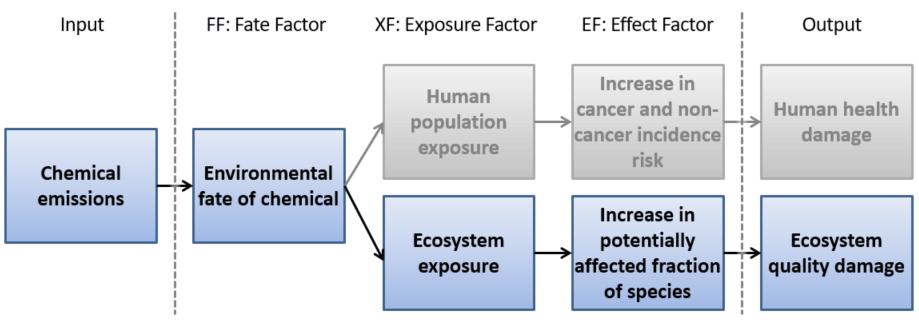Chemicals can be emitted to the environment (air, water, soil, etc.) during all life cycle stages of products, services and systems. Emission inventories of different products may contain hundreds of chemicals, of which many will have the potential to cause ecotoxic impacts on aquatic and terrestrial ecosystems, leading to damages on ecosystem quality.
Cause-effect pathway
The impact pathways for ecotoxicity builds on the combination of an environmental fate factor, an ecological exposure factor, an ecotoxicity effect factor, and an ecotoxicity-effect damage factor. The fate factor indicates the distribution and transformation of chemicals in the environment, the exposure factor relates dissolved to total chemical mass in the environment, the ecotoxicity effect factor indicates potential ecotoxicity effects per unit of dissolved chemical mass in the environment, and the damage factor finally relates potential effects to damages on ecosystem quality.
Included are organic chemical substances and metal ions.
 Cause-effect chain for ecotoxicity-related damages on ecosystem quality (and human health) from chemical emissions
Cause-effect chain for ecotoxicity-related damages on ecosystem quality (and human health) from chemical emissions
Modeling approach
Global or (sub-)continental average characterization factors are modeled based on the assumption of linearity between exposure and species response.
Value choices
To maintain consistency with other impact categories, a time horizon of 100 years is set for the high level of robustness scenarios.
Spatial variability
The default are global average characterization factors for different emission compartments (local scale: indoor and urban air; continental and global scale: rural air, agricultural and natural soil, freshwater and marine water).

